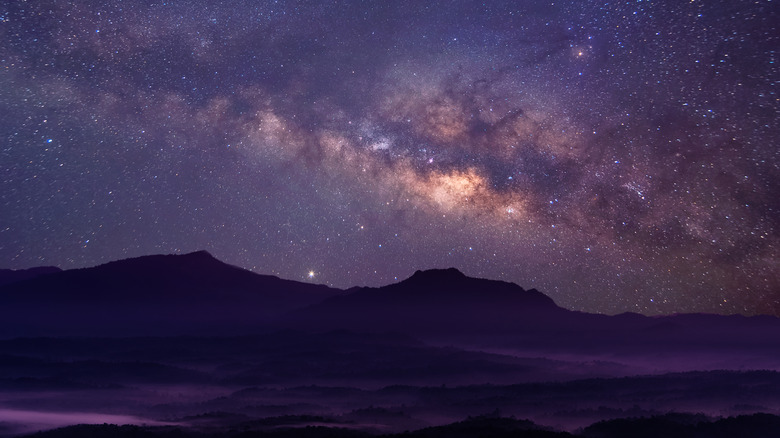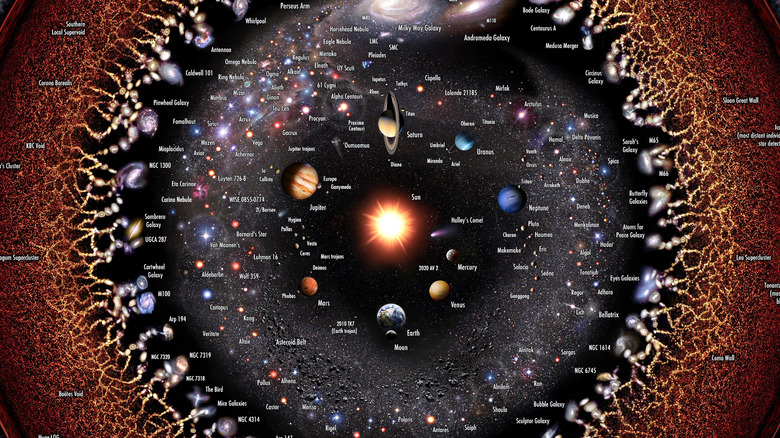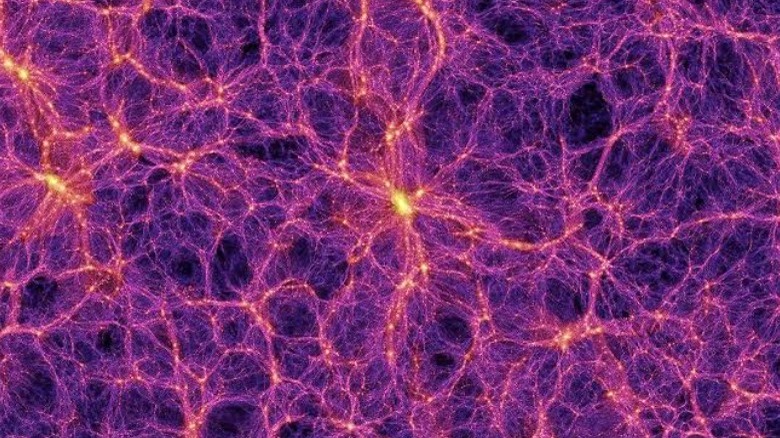What's The Biggest Object In The Universe?
The first time someone sees an elephant up close, they might feel intimidated by its size and say, "Whoa, he's enormous!" Folks who climb mountains might step onto the summit and scan the horizon, saying, "Wow, it's all so huge!" And does anyone remember the old family-friendly comedy, "Honey, I Shrunk the Kids" with Rick Moranis? Depending on size, even a single leaf might look like a football field.
So how about the universe? Big jump, we know. Our one, single planet of about 8 billion (per Worldometers) people revolves around one single star, the sun, within a single galaxy of 100 – 400 billion stars (per NASA). And our galaxy is on the small side. More to the point, the whole thing is only one of at least 2 trillion galaxies in the entire universe, as Forbes explains. Our most powerful telescopes have only illuminated about 4% of it all (per Space). This is all to say, the next time you're in traffic and mad at someone who cuts you off because now you're stuck behind a red light and will probably be late for the most important meeting in the history of ever? Perspective time, people.
When you look up at the night sky and see a speck, it might not be a single star, but an entire galaxy like ours littered with eons-dead civilizations. All the vastness of space is really, really big. And it's filled with really, really big stuff.
Measuring size at the speed of light
If you're looking to have a true, bone-deep existential crisis, or remember that it's actually fine if you forgot to throw those socks in the last load of whites, check out one of these "size of the universe" comparison videos on YouTube. Grab a comfort blanket if you need, or popcorn if you're one of those gleefully lording over the irrelevance of mankind.
It takes about three-plus hours to drive from Boston to New York City. Side note: Don't be one of those people thrilled by beating previous driving records. Sixty miles per hour will get you to the moon in six months, as Science Focus tells us. But at the speed of light? About 2.5 seconds, per Business Insider. This is why we reckon distance in space according to light speed, 186,282 miles per second (not hour), because anything else produces unmanageable numbers. That's 7.5 times around the Earth per second. So basically, using our current rocket tech, we won't be encountering Klingons or Vulcans anytime soon.
The entire Milky Way galaxy — our one, single galaxy out of over 2 trillion — is about 100,000 light years across, as NASA says. That means light can travel across the whole thing in 100,000 years. One light-year — the distance light travels in a year — is about 5.8 trillion miles.
A galactic filament igniting the void
Now that you've got a proper vision of scale according to the speed of light and galactic distance, we can go bigger. Our neighboring galaxy, Andromeda, is over twice as big as the Milky Way, as NASA explains. It's 220,000 light-years wide. One other galaxy out of the infinitude, IC 1101, is 5.5 million light-years wide, as Live Science states. That's over 50 times as big as the Milky Way.
Individual objects in space — stellar bodies — are enormous in and of themselves, too. Take the largest observable star, the hypergiant UY Scuti. It's 1,700 times bigger than our little ole' sun. If you plunked it down where the sun is, it would gobble up Jupiter, and its gases and dust would extend beyond Pluto. The largest black hole, Ton 618 (an "ultramassive" black hole), is 66 billion times the mass of the sun, as Space says. It puts typical, supernova-produced black holes to shame. Then there's empty voids like the Eridanus supervoid, a span of zero light, matter, or mass — nothing at all — 1.8 billion light years across, as Vice explains. That's as wide as 18,000 Milky Ways.
The biggest object, though? The "Hercules-Corona Borealis Great Wall," a colossus of gravitationally-bound galaxies discovered in 2013, per Science Focus. At an unbelievable 10 billion light years across, it's so big that it looks like a cluster of lit neurons. This is why it's called a "galactic filament."


